Bench Press Exercises
Table of Contents
What is a Bench Press?
A compound exercise that targets the muscles in the upper limb is the bench press. While reclining on a bench, the user lifts weights using a barbell or a pair of dumbbells. During a bench press, you press upward while lowering the weight to your chest with your arms outstretched.
Bench presses may be performed in a number of ways that target different muscle groups. These could have an impact on whether you’re resting flat, at an angle, going down, or moving your hands closer together on the barbell.
The muscles that a bench press works
Bench presses may work the following muscles, however, the precise variation you choose may somewhat change which ones are worked:
- Pectoralis major
- Anterior deltoid
- Triceps brachii
- Biceps brachii
- Serratus anterior
Benefits of a Bench Press:
The bench press, a challenging exercise, targets the pectoralis major of the chest, the anterior deltoids of the shoulder, and the triceps brachii of the upper arm.
Bench press motion patterns, grips, and muscles were addressed.
Both strength and the development (hypertrophy) of these muscles are promoted by it. As muscle mass normally diminishes with aging, muscular growth is not simply desirable by bodybuilders but also offers benefits to everyone. The bench press is a practical exercise that improves your ability to push or move objects throughout the day.
For athletes who use pulling muscles the majority of the time, this exercise can aid in regaining muscle mass.
Swimmers, climbers, and wrestlers all benefit from this. The third lift in the sport of powerlifting is the barbell bench press, with the other two being the deadlift and squat.
What effects do various bench press methods have on the muscles?
Every bench press rep. targets a separate set of tiny muscles. Various examples include
standard bench presses. Pushing a barbell up and down at chest height is done during this exercise while lying flat on a bench. It controls the shoulders, arms, and pectoral muscles.
Bench press on an angle. For this interpretation, the bench should be angled upward between 50 and 60 degrees so that you are partially bending your back.
Decline bench press. For this version, the bench should be tilted downward so that your feet are higher than your head as you squat down. It controls the shoulders and lower chest muscles.
Bench press with a small grip. With this method, your hands are closer to one another on the barbell. It controls the forearms and triceps.
Not every one of these variants needs to be done during the same session. A muscle group might get damaged if it is overexposed. This is especially true if you are lifting hefty objects.
You can choose two or more variants for each workout if you prefer diversity. Give yourself one or two days to relax so that your muscles can recuperate before switching to the other variants.
Here are some examples of various bench press techniques:
Traditional flat bench press
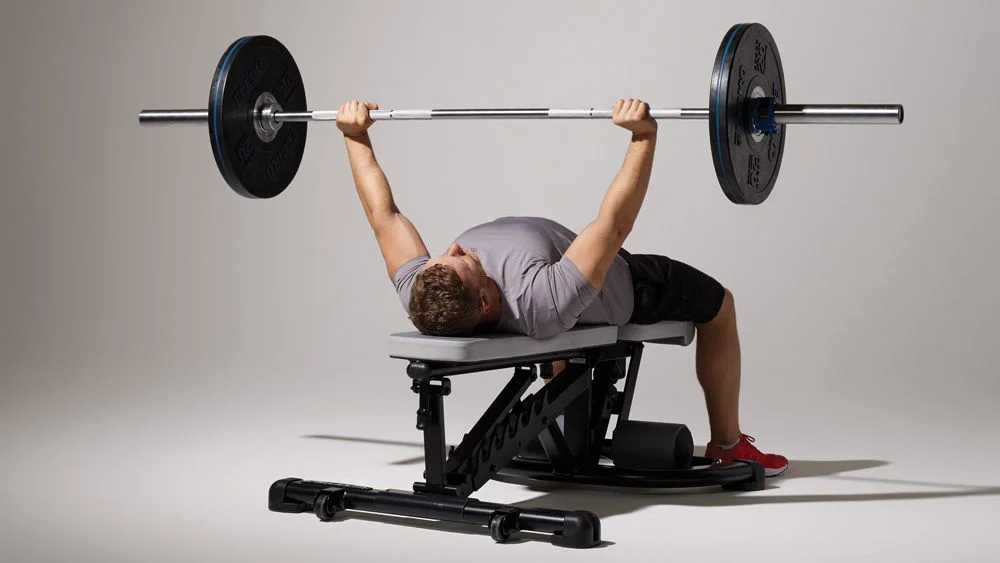
Instruments needed: A flat bench and barbells (additional weights optional) or dumbbells are required.
- On a flat bench, lie on your back. Hands somewhat broader than shoulder width should be used to hold a barbell. Over the shoulders should be the barbell.
- Keep your hips on the bench the entire time and firmly plant your feet into the ground.
- Throughout the motion, keep your core engaged and your spine in a neutral position. Do not arch your back.
- If used, remove the barbell or dumbbells from the rack gently. Allowing the elbows to bend out to the side, about 40 degrees away from the torso, lower the barbell to the chest, around the nipple level.
- When your elbows are just barely below the bench, you can stop falling. As you lift the barbell back to the starting position, firmly plant your feet into the ground.
- Swing the weight for 8 to 10 repetitions. Finish up to two or three sets.
Narrow grip bench press
Equipment required: A Barbell (extra weights optional), a flat bench are necessary pieces of equipment.
To do a normal bench press, follow the previous instructions, but maintain your hands shoulder-width apart the entire time.
Incline bench press
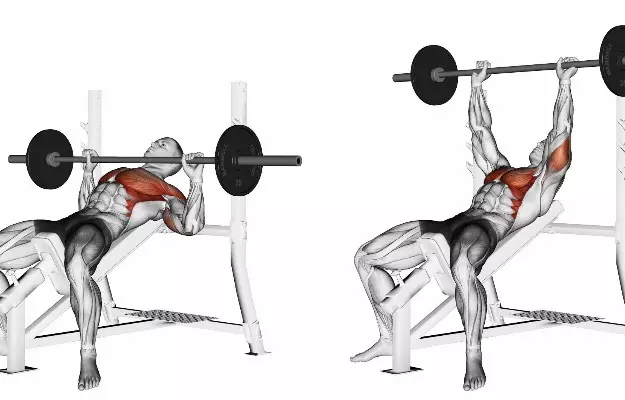
Equipment required: Two dumbbells or barbells, plus an incline bench oriented between 50 and 60 degrees, are necessary pieces of equipment.
- Your back should rest comfortably on the bench with your feet level on the ground and your slightly slouched back.
- Dumbbells or a barbell should be held straight above the shoulders to start. Your thumb should be encircling the handle as you align your palms.
- With your elbows extended at a 40-degree angle, lift the weight up towards your eyes or slightly higher.
- Inhale as you slowly and carefully drop dumbbells or barbells until they contact or extend just over your chest, keeping your elbows and wrists out to the sides the entire time.
- Complete at least 5 repetitions of the press. Repetition depends on your weight and goals, so keep that in mind. Fewer repetitions may be performed by someone using greater weights than by someone using lesser weights.
Decline chest press
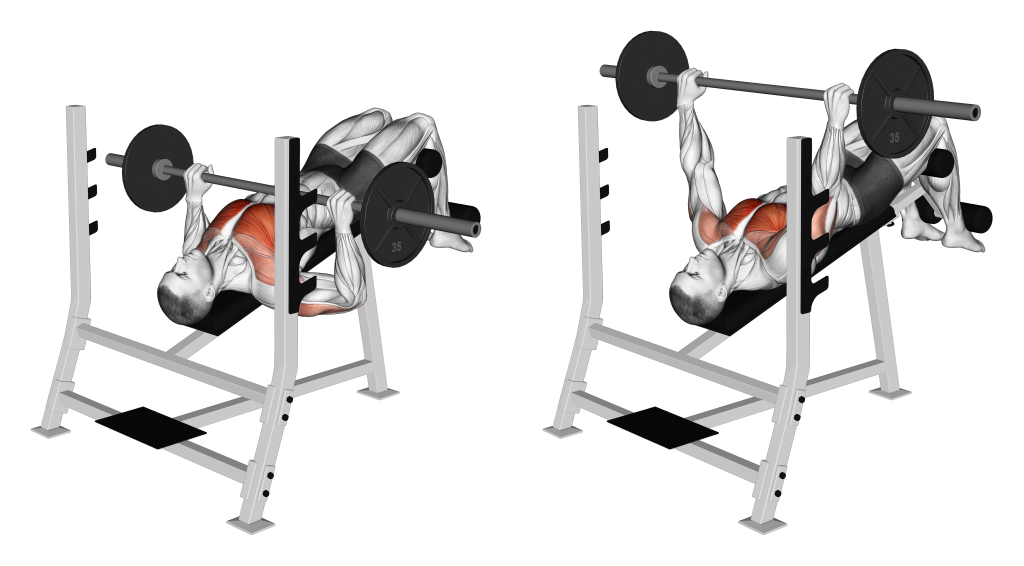
Equipment needed: dumbbells or a barbell, and a bench bent at a 15- to 20-degree angle.
- Slowly lie down on the decline bench with your leg up over your head and your back firmly planted on the bench. Put the supplied stirrups on your feet.
- If you’re using dumbbells, have a spotter hold them for you while you raise the barbell off the rack. Keep your arms slightly broader than shoulder height and your weight straight above your shoulders.
- When your arms are at the top, press the weight up until they are at a 50-degree angle.
- Drop the weight back down to chest height while keeping your elbows out to the sides.
- Complete at least five repetitions of the press. Repetition counts vary depending on your weight and goals. Fewer repetitions may be needed if utilizing heavier weights as opposed to lesser weights.
Partial Bench Press
Avoid lowering the weight so much that the majority of the arms fall below parallel if you have any instability issues with your shoulder joints.
This adjustment lessens stress on the shoulder region even if you might not benefit from the entire range of motion.
Include bench presses into your routine:
- Bench presses may be incorporated into your program; however, you should only do them once or twice a week at the most. Allow your muscles to recuperate by waiting at least a day between bench presses.
- Your fitness objectives will determine how many repetitions you do throughout each session. Doing just 3 to 5 repetitions at a time may be sufficient to be effective if you are using really heavy weights. By taking a little break in between sets, you may complete up to 3 sets. Additionally dependent on goals is the number of sets. Lifters looking to increase strength should perform 4 to 6 sets, while those looking to improve their athletic endurance can perform 2 to 3 sets.
- Spend another day working your legs and shoulders by performing squats, lunges, and overhead presses for a full-body exercise. Include cardiovascular activities in your weekly program as well, such as cycling, swimming, and jogging.
- To ensure that you are training your whole body, it is crucial to follow this sort of diversified regimen. You can take break days throughout this form of weekly exercise to allow your muscles to heal.
- Full-body workouts can be more effective than spot training, which involves performing the same exercise repeatedly in an effort to add muscle. Remember that your body quickly adapts to exercise, so you should vary your activities to keep it challenged.
Common Mistakes
To maintain the safety and usefulness of your bench press, avoid these frequent blunders.
- Over the Mouth or Neck Moving the Bar
Make sure the barbell does not pass too close to your mouth or neck when racking or unracking it. This implies that you should move the weight to and from the rack with your arms extended rather than lowering it over your face and neck.
- Insufficient Grip Width
Normally, your grip on the barbell should be wide enough for your elbow joints to be at right angles (at the very least) and for your forearms to be vertical. You run the danger of injuring your pectoral muscles if your grasp is too broad and your elbows are split too far apart.
- Incorrect Thumb Position
The thumb location is impacted by yet another grip-related mistake. Thumbs should be placed under the barbell and over the tops of the fingers when you hold the barbell overhand. Never lock your thumbs beneath your fingers or behind the barbell.
- Locking Elbows Suddenly
Contrary to conventional weightlifting safety recommendations, when performing a bench press, you can “lock out” your elbows. It’s important to avoid locking the elbow’s release abruptly or explosively while putting this action safely together.
- Pushing Head Into Bench
Keep your head flat on the bench and your feet level on the ground for stability. To prevent weakening your neck muscles during the lift, avoid burying your head on the bench.
- Arching Back and Lifting Buttocks
Throughout the press, your buttocks should remain flat on the bench. Avoid mimicking the power-lifter style of back arching when your buttocks rise off the bench. Low back ache may develop if you perform.
Safety and Precautions
- You must stay away from this workout if your shoulder joint has had any trauma.
- If you experience any shoulder discomfort while performing the bench press, switch the weights and stop the exercise immediately.
- By completing presses without weight on the bar, beginners may warm up, become more conscious of the bar, and acquire appropriate technique. If you are less experienced, you should only bench press a hefty weight with the assistance of a spotter.
- Using a power rack is a smart idea when pressing heavy weights. This type of rack has bars on either side that are chest height. If your lift is unsuccessful, the bars will prevent the barbell from smashing your chest.
- Start by using an unweighted barbell to complete three sets of ten reps. Once you can do this exercise safely and with the right form, start adding weight. 2.5 pounds should be added to each side of the bar each week for a total addition of 5 pounds.
- Don’t increase your weight.
FAQs
When you bench press, your pectorals, shoulders, and arms will be primarily worked, The top portion of the arm bone (humerus), where the pectoralis major muscle is connected, is derived from the sternum, ribs, and collarbone.
The bench press is a fantastic back workout since it partially or fully activates practically all of the muscles in the upper body. In this exercise, the triceps, deltoid shoulder muscles, pectoral muscles in the chest, and latissimus dorsi in the back are all active.
Bench Press Benefits
Strength in the upper body has improved.
Predictor of Upper-Body Strength.
Greater is Pec Major.
more potent Minor Pec.
The anterior Serratus tears.
iron-made delts.
Triceps power increased.
Bone health has gotten better.
Yes, you may bench press every day if your goal is to improve technique, break through a plateau, or temporarily prioritize the bench press above other workouts. It is not recommended to bench press every day if a lifter is susceptible to sickness or cannot exercise regularly seven days a week.
In order to lose chest fat, practicing continuous bench presses is not the ideal course of action. Bench presses can help you develop larger pecs, but doing simple chest workouts is unlikely to dramatically boost metabolism.
Bench pressing challenges result from a range of factors, including weak shoulder, triceps, and chest muscles. Additionally, it could occur from inadequate or inaccurate formatting and even cause muscle insufficiency.
Reference
- Bench Press Exercise – Benefits, Muscle worked, How to do? https://mobilephysiotherapyclinic.in/bench-press/
- Bench Press: Muscles Worked, Benefits, How to, Variations, & More. https://www.healthline.com/health/exercise-fitness/bench-press-muscles-worked

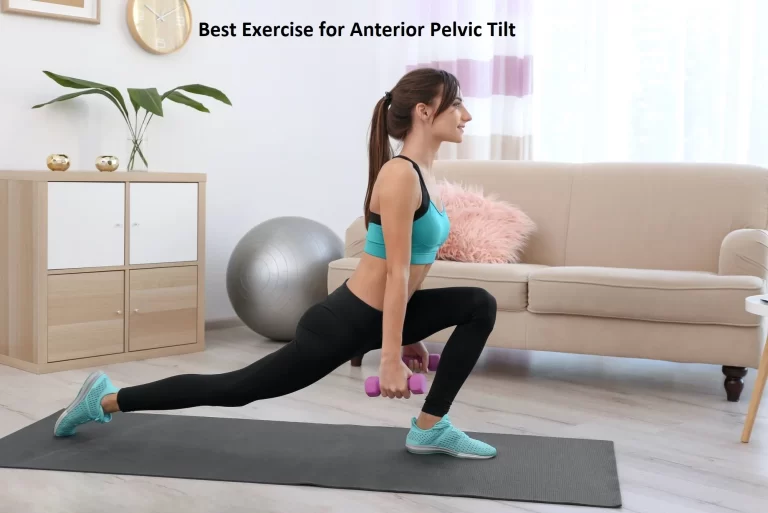



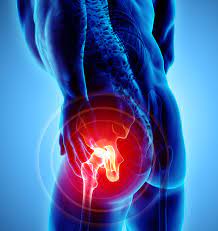
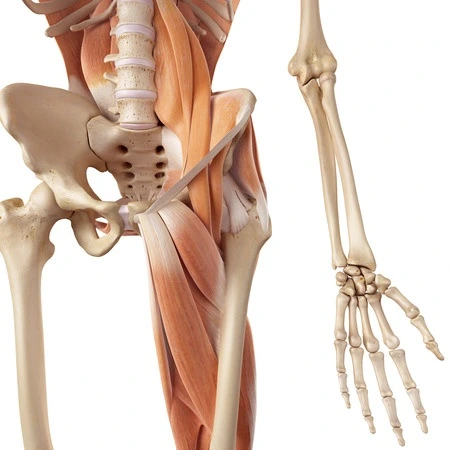
One Comment